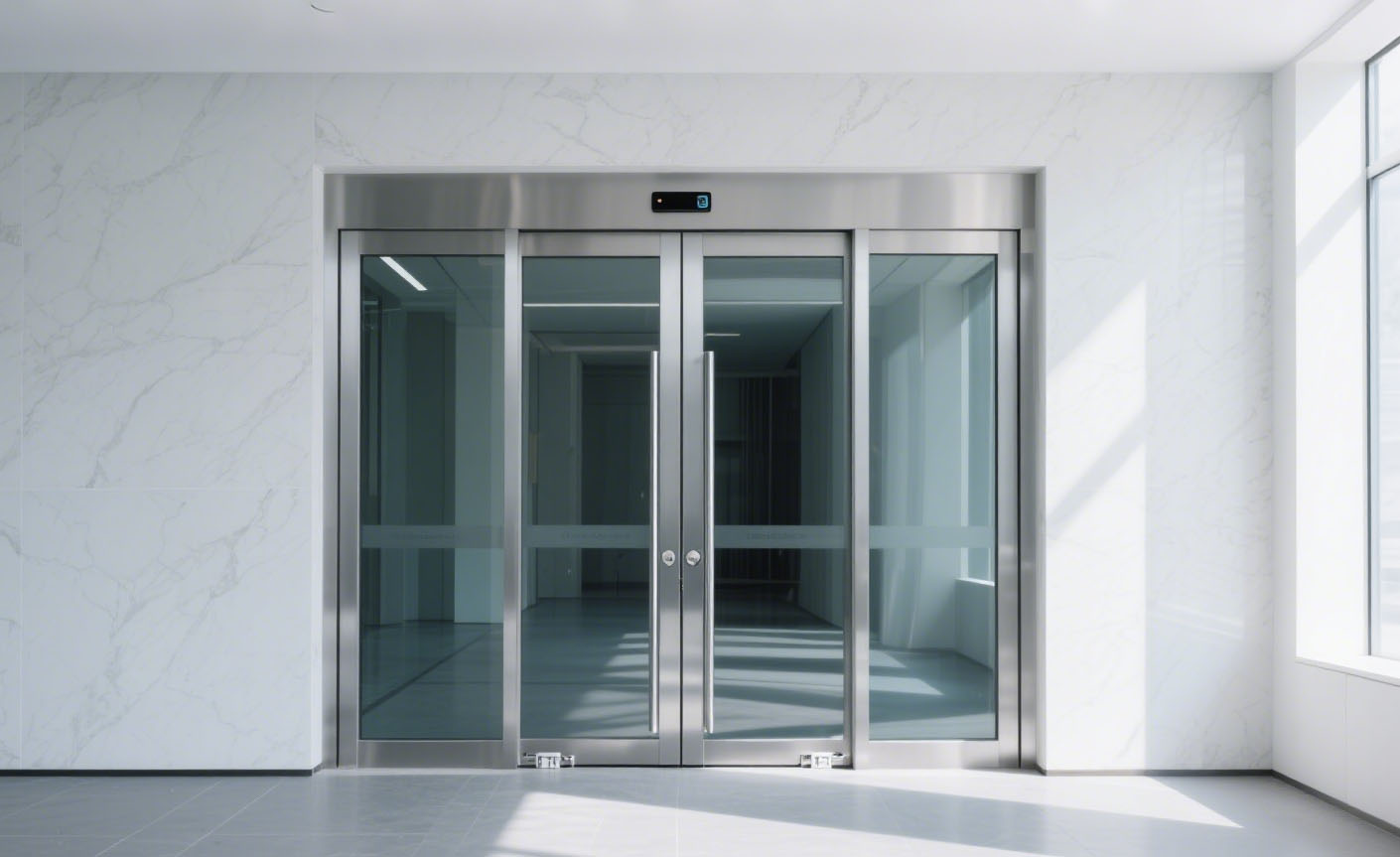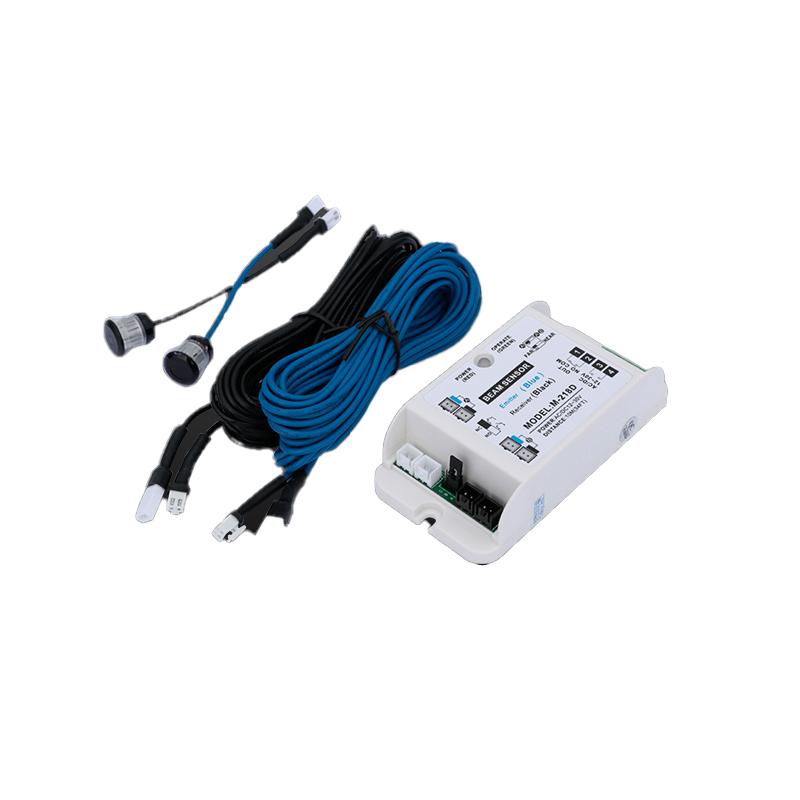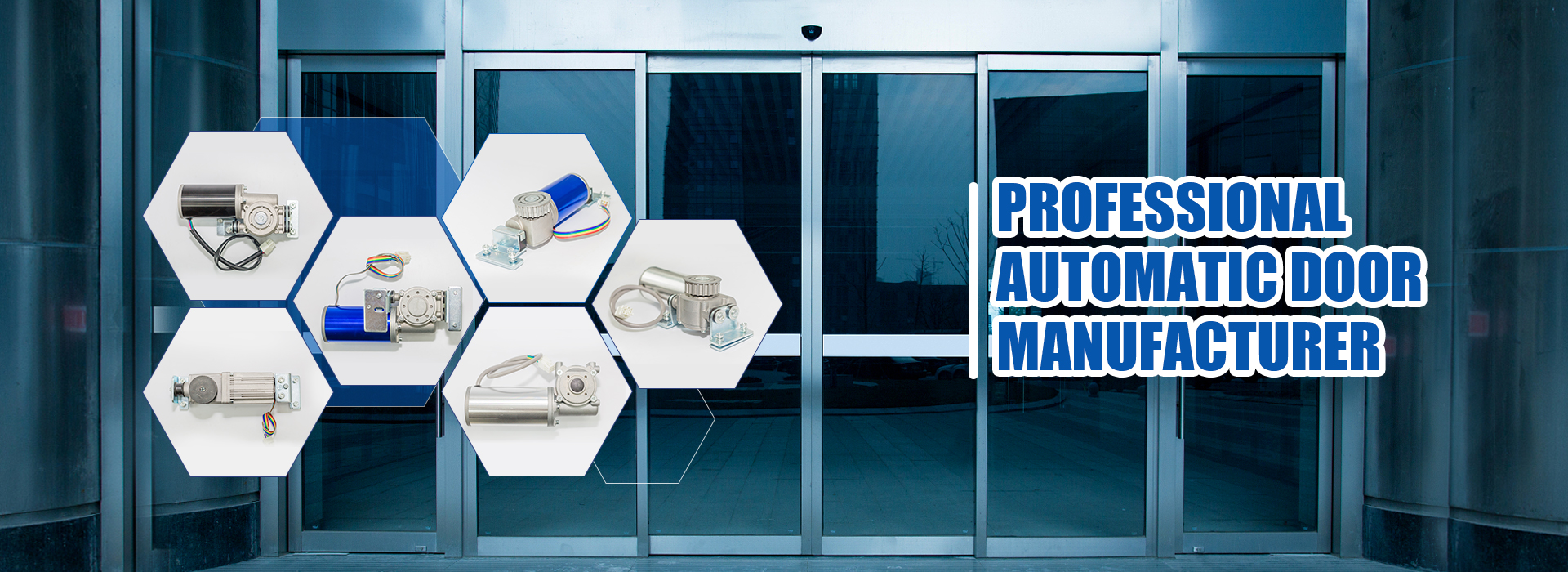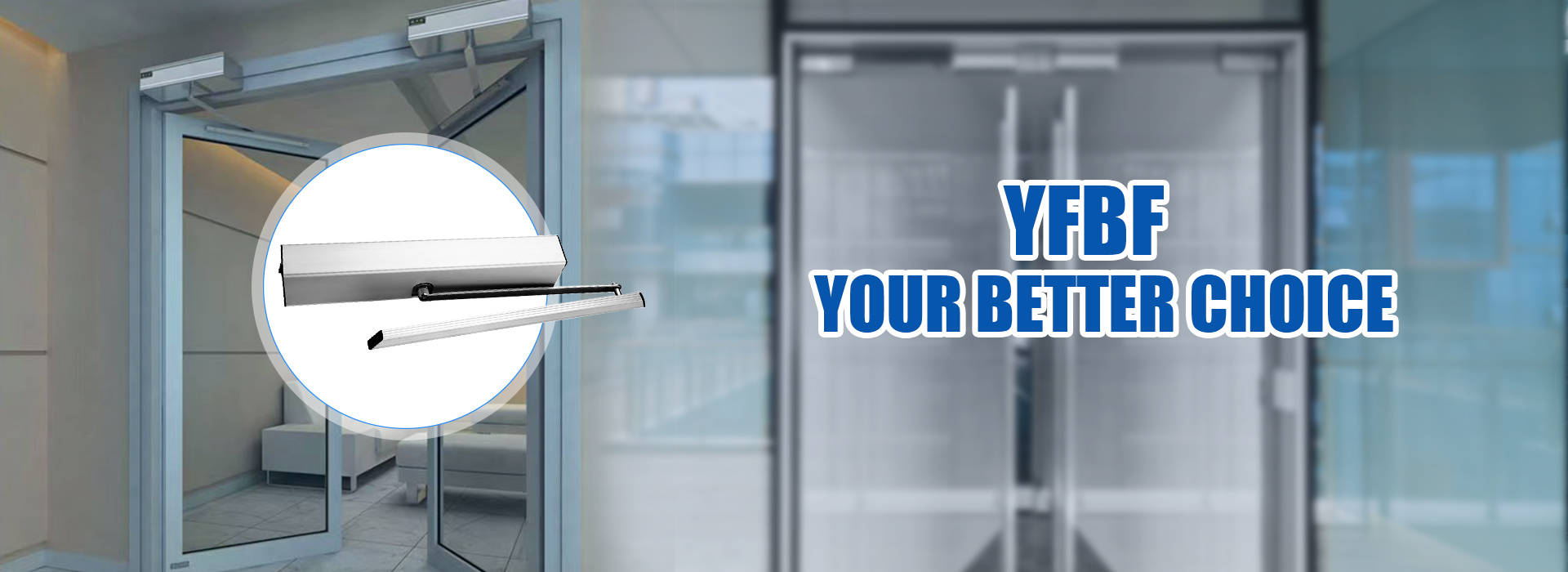
A Safety Beam Sensor detects objects in the path of an automatic door. It uses a light beam to sense movement or presence. When the sensor identifies an obstruction, the door stops or reverses. This quick action keeps people, pets, and belongings safe from injury or damage.
Key Takeaways
- Safety beam sensors use invisible infrared light to detect objects in a door’s path and stop or reverse the door to prevent accidents.
- These sensors protect people, pets, and property by quickly responding to any obstruction, reducing injuries and damage.
- Regular cleaning, alignment checks, and maintenance keep the sensors working reliably and extend their lifespan.
Safety Beam Sensor Technology and Operation
How the Infrared Beam Works
A Safety Beam Sensor uses an invisible infrared beam to create a protective barrier across the path of an automatic door. The system places a transmitter on one side of the doorway and a receiver on the other. The transmitter sends a steady stream of infrared light directly to the receiver. When nothing blocks the path, the receiver detects the beam and signals that the area is clear.
Modern safety beam sensors have evolved from simple threshold beams to advanced systems that combine motion and presence detection. These sensors can adjust their detection zones with great precision. Some even scan areas beyond the doorway to increase safety. Today’s standards require sensors to cover a wide area in front of the door and maintain detection for at least 30 seconds. This ensures that people, pets, or objects remain protected while near the door.
Tip: Infrared beam sensors respond quickly and fit into compact spaces, making them ideal for busy entryways.
What Happens When the Beam is Interrupted
When a person, pet, or object crosses the path of the infrared beam, the receiver instantly loses the signal. This break in the beam tells the system that something is in the doorway. The Safety Beam Sensor then sends a signal to the door’s control unit.
The control unit acts like the brain of the system. It receives the alert and knows that the door must not close. This quick response prevents accidents and injuries. The system can also be set to trigger an alarm or send a notification if needed.
Infrared sensors work well for most doorways, but they do have some limits. They cannot see through solid objects, and strong sunlight or dust can sometimes interfere with the beam. However, through-beam sensors, which use separate transmitters and receivers, resist sunlight and dust better than other types. Regular cleaning and proper alignment help keep the system working smoothly.
| Environmental Factor | Through-Beam Sensors | Retroreflective Sensors |
|---|---|---|
| Dust and Dirt | Less affected | More affected |
| Sunlight | More resistant | Less resistant |
| Moisture/Fog | Performs well | More prone to issues |
| Maintenance | Occasional cleaning | Frequent cleaning |
Automatic Door Response Mechanism
The automatic door’s response to a blocked beam is both fast and reliable. When the Safety Beam Sensor detects an interruption, it sends a signal to the door’s motor controller. The controller immediately stops the door or reverses its movement. This action keeps people and property safe from harm.
Safety beam sensors work with many types of doors, including sliding, swinging, and garage doors. They also connect easily with building automation systems. This allows the sensors to trigger alarms, adjust lighting, or alert security staff if needed. Building codes and safety standards require these sensors to meet strict rules for coverage, timing, and reliability. Manufacturers test each sensor under tough conditions to make sure it works every time.
Note: Regular testing and cleaning help maintain the sensor’s accuracy and keep the door’s safety features working as intended.
Safety Beam Sensor in Real-World Accident Prevention
Protecting People and Pets
Automatic doors present a hidden danger for children and pets. Many do not recognize the risk of a closing door. A Safety Beam Sensor acts as a vigilant guard, creating an invisible barrier across the doorway. When a child or pet interrupts the beam, the sensor instantly signals the door to stop and reverse. This quick response prevents injury and entrapment. Families rely on these sensors to keep loved ones safe. Safety regulations often require their installation, highlighting their importance. Routine testing and cleaning ensure the sensor works every time. Parents and pet owners gain peace of mind, knowing the system protects those who matter most.
Tip: Regularly check the sensor’s alignment and cleanliness to maintain reliable protection for children and pets.
Preventing Property Damage
Vehicles, bikes, and belongings often sit near automatic doors. A Safety Beam Sensor detects any obstruction in the door’s path. If a car or object blocks the beam, the sensor halts the door’s movement. This action prevents costly damage and avoids unnecessary repairs. Industrial settings benefit from advanced sensors that use multiple detection methods. These systems protect equipment and vehicles from accidental hits. Homeowners also see fewer incidents involving garage doors and stored items. Insurance companies recognize the value of these sensors. Many offer lower premiums to properties with installed safety systems, rewarding proactive risk management.
- Protects vehicles from door collisions
- Prevents damage to stored items
- Reduces repair costs for families and businesses
Real-Life Examples of Accident Avoidance
Safety beam sensors have proven their effectiveness in real-world settings. Warehouses, homes, and businesses report fewer accidents after installing these devices. The following table shows the impact of safety sensors in a busy warehouse:
| Metric | Before Implementation | After 12 Months of Use |
|---|---|---|
| Collision Incidents | 18 incidents per year | 88% reduction |
| Pedestrian Injuries | 2 injury incidents per year | No pedestrian injuries reported |
| Maintenance Downtime | N/A | Decreased by 27% |
| Forklift Training Duration | 8 days | Reduced to 5 days |
| Estimated Cost Savings | N/A | $174,000 AUD |
This data highlights dramatic improvements in safety and cost savings. Businesses experience fewer injuries and less downtime. Families enjoy safer homes. The Safety Beam Sensor stands out as a reliable solution for accident prevention.
Safety Beam Sensor Maintenance and Troubleshooting

Common Issues Affecting Performance
Many factors can affect the performance of a safety beam sensor. The most common problems include misaligned sensors, dirty lenses, and wiring issues. Direct sunlight or weather can also cause trouble. The table below highlights frequent issues and their impact:
| Issue Type | Description / Cause | Impact on Performance | Common Fixes / Notes |
|---|---|---|---|
| Misaligned Sensors | Sensors not facing each other properly | Door reverses or will not close | Adjust brackets until lights are steady; tighten mounting brackets |
| Dirty or Obstructed Lenses | Dust, cobwebs, debris blocking the beam | Beam blocked, door reverses or will not close | Clean lenses with a soft cloth; remove obstructions |
| Wiring Connection Issues | Damaged, loose, or disconnected wires | Sensor failure | Inspect and repair or replace wires |
| Electrical Interference | Nearby devices causing interference | False beam interruption | Remove or relocate interfering devices |
| Weather-Related Issues | Sunlight, humidity affecting sensors | Lens damage or beam interference | Shield sensors from sunlight; improve ventilation |
Troubleshooting Steps for Homeowners
Homeowners can solve many sensor problems with simple steps:
- Check alignment by making sure both sensor lenses face each other and the LED lights are solid.
- Clean the lenses with a microfiber cloth to remove dust or cobwebs.
- Inspect wiring for damage or loose connections and repair as needed.
- Clear any objects blocking the sensor beam.
- Test the door after each fix to see if the problem is solved.
- If problems continue, call a professional for help.
Tip: Use a multimeter to check voltage and a screwdriver to tighten brackets for better results.
Maintenance Tips for Reliable Operation
Regular maintenance keeps sensors working safely. Clean the lenses every three months or more often if dirt builds up. Inspect alignment and wiring monthly. Schedule a professional service once a year to check sensor function and safety. Quick action on small issues prevents bigger problems and extends the life of the system.
Safety beam sensors deliver reliable protection for people and property. They offer long-term safety, easy maintenance, and seamless integration with building systems. Regular checks and cleaning help prevent costly accidents.
Choosing this technology means fewer risks, lower repair bills, and peace of mind for every building owner.
FAQ
How does a safety beam sensor improve home safety?
A safety beam sensor detects movement in the door’s path. It stops or reverses the door. Families gain peace of mind and avoid accidents.
Can safety beam sensors work in bright sunlight or dusty areas?
Yes. Advanced sensors use special filters and technology. They maintain reliable detection even in challenging environments like sunlight or dust.
How often should someone clean or check a safety beam sensor?
Check and clean the sensor every three months. Regular care ensures the sensor works properly and keeps everyone safe.
Post time: Aug-21-2025



